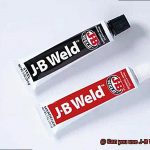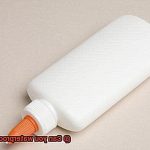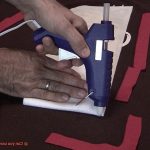Have you ever been in a sticky situation where you needed to seal something up but didn’t have the right sealant on hand? If you’re like most people, you’ve probably wondered if Gorilla Glue could do the job. After all, it’s a versatile adhesive that can bond almost anything together. But can it serve as a sealant too?
Well, the answer is not as straightforward as you might think. While Gorilla Glue isn’t specifically designed as a sealant, it can certainly function as one in certain situations. That said, there are some important things to keep in mind before using it.
In this post, we’ll dive deep into the topic of using Gorilla Glue as a sealant. We’ll explore what makes Gorilla Glue different from other adhesives and how it works to create strong bonds. We’ll also discuss the properties that make it suitable for sealing and when it might be the best option.
Whether you’re an avid DIYer or just someone who likes to fix things around the house, this article is for you. So keep reading to find out how Gorilla Glue can help you seal up everything from leaky pipes to cracked pottery.
Can You Use Gorilla Glue as a Sealant?
Contents
- 1 Can You Use Gorilla Glue as a Sealant?
- 2 The Pros and Cons of Using Gorilla Glue as a Sealant
- 3 Alternatives to Using Gorilla Glue as a Sealant
- 4 Benefits of Choosing the Right Sealant for the Job
- 5 Different Types of Sealants Available
- 6 Tips for Choosing the Right Sealant
- 7 How to Properly Apply a Sealant
- 8 Common Mistakes When Applying a Sealant
- 9 Conclusion
Gorilla Glue is a versatile and popular adhesive that is known for its exceptional bonding strength and durability. It has become a go-to choice for various applications, including woodworking, metalworking, and automotive repair. However, one question that often arises is whether Gorilla Glue can be used as a sealant.
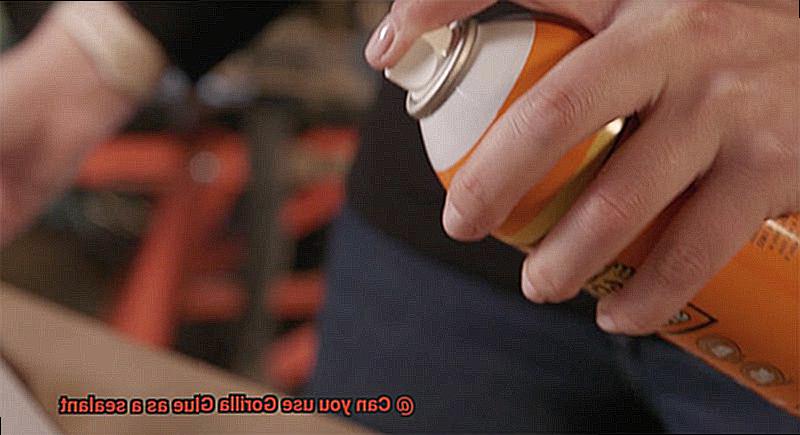
The answer is yes – Gorilla Glue can be used as a sealant due to its waterproof and weather-resistant formula. It is an excellent choice for outdoor applications such as sealing leaks in pipes, gutters, and roofs. Furthermore, it can withstand extreme temperatures and perform well in both hot and cold environments.
However, it is crucial to follow the manufacturer’s instructions carefully when using Gorilla Glue as a sealant. Before applying the glue, make sure that the surface is clean and dry to ensure maximum adhesion. As Gorilla Glue expands as it dries, use it sparingly to avoid excess foam buildup.
Here are some essential tips to keep in mind when using Gorilla Glue as a sealant:
- Surface preparation: Clean and dry the surface before applying the glue to ensure maximum adhesion.
- Application: Apply a small amount of Gorilla Glue to the surface with an applicator or brush. Remember that it expands as it dries, so use sparingly.
Clamping: Clamp the surfaces together firmly for at least 1-2 hours after applying the glue.
- Cleanup: Wipe off any excess glue immediately with a dry cloth or paper towel. If it has already dried, use acetone or nail polish remover to remove it.
- Safety: Always wear gloves and eye protection when working with Gorilla Glue to prevent skin irritation or eye damage.
The Pros and Cons of Using Gorilla Glue as a Sealant
If you’re in search of a versatile adhesive for your DIY projects, Gorilla Glue is a popular choice. But can it be used as a sealant? While it certainly has water-resistant properties and the ability to create a strong bond between materials, there are both pros and cons to using Gorilla Glue in this way.
On the positive side, one of the main benefits of using Gorilla Glue as a sealant is its ability to resist water. Once cured, it provides a waterproof seal that can withstand exposure to moisture without losing its adhesive properties. This makes it perfect for sealing items that will be exposed to water or other liquids.
Additionally, Gorilla Glue’s ability to create a strong, permanent bond between materials is ideal for sealing items that will be subjected to stress or movement. It can create a tight seal that will hold up over time, even in challenging conditions.
However, there are some potential drawbacks to keep in mind as well. One major concern is the glue’s tendency to expand as it cures. This can cause the glue to push out of the area being sealed, resulting in an uneven or messy finish. The expanding nature of the glue can also make it challenging to control the amount used, which may cause it to get onto other surfaces.
Another issue with using Gorilla Glue as a sealant is its color and texture. The glue dries to a dark brown color, which may not be suitable for all applications. Furthermore, its rough and uneven texture might not create the smoothest finish depending on the materials being sealed.
So, before deciding whether to use Gorilla Glue as a sealant, take into account the materials being sealed and the conditions they will be subjected to. If exposed to water or other liquids, Gorilla Glue’s water-resistant properties make it an excellent choice. However, if you’re looking for a precise finish or sealing something with fine details or textures, then Gorilla Glue’s expanding nature may not be the best fit.
Alternatives to Using Gorilla Glue as a Sealant
As a sealant expert, I’ve compiled a list of alternatives to consider.
First on the list is silicone sealant. This flexible and durable sealant works well on various surfaces and is resistant to water, heat, and chemicals. It’s perfect for bathroom and kitchen sealing applications where moisture is prevalent.
Epoxy is the next option to consider. This two-part adhesive forms a powerful bond when mixed together and is ideal for surfaces exposed to water or extreme temperatures. It’s versatile and can be used on metal, plastic, wood, and more.
Polyurethane sealant is perfect for sealing concrete, masonry, and other porous surfaces. This flexible and durable sealant is resistant to water, chemicals, and UV rays.
Butyl tape is a waterproof tape made of a rubber-like material that adheres well to most surfaces. It’s an excellent choice for sealing roofs, windows, and other areas exposed to moisture.
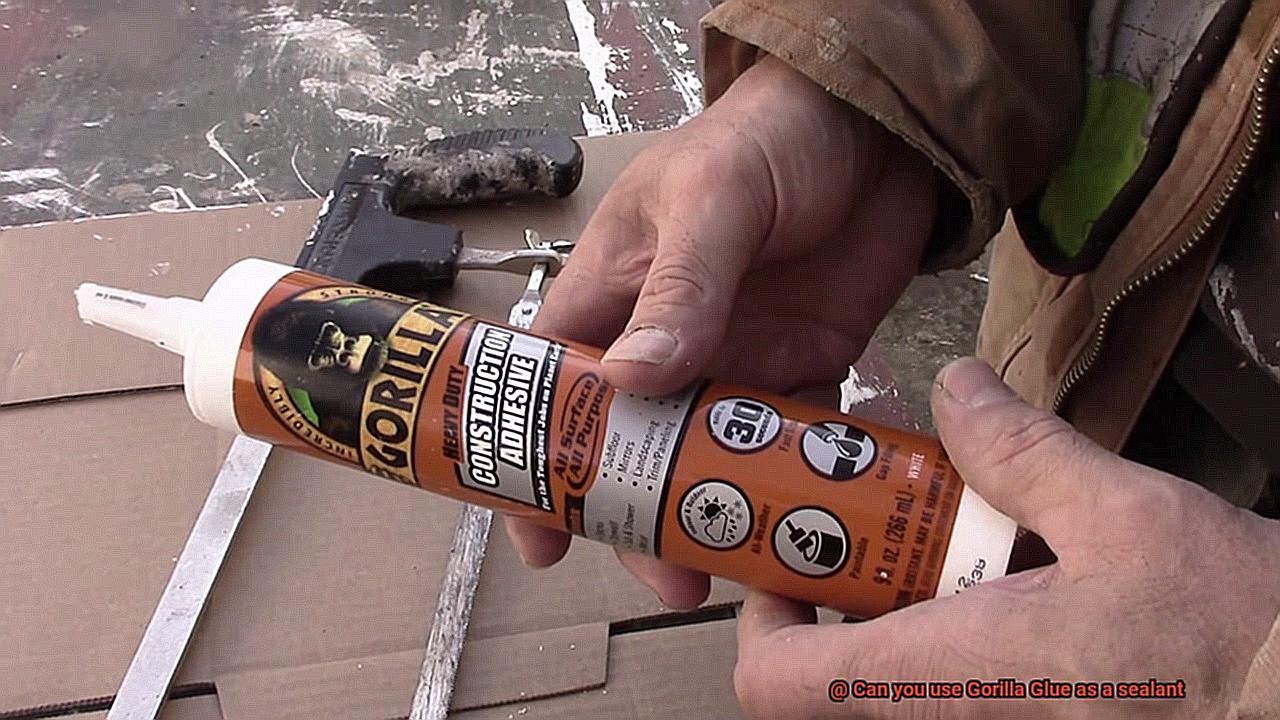
Lastly, if you need a temporary solution, duct tape can come in handy. Although not as durable or waterproof as other options, it’s versatile and can be useful in a pinch.
Benefits of Choosing the Right Sealant for the Job
If you’re embarking on a DIY or professional project that involves sealant, it’s important to choose the right product. Selecting the wrong one can not only result in a failed project but also lead to costly repairs down the line. On the other hand, choosing the right sealant can bring numerous benefits that make your project a success.
Proper Bonding:
The first benefit of selecting the right sealant is ensuring proper bonding between surfaces. It’s essential to note that different materials require different types of sealants. Using the incorrect one can result in weak or ineffective bonds, which could lead to potential leaks and other issues. Therefore, it’s crucial to pick a sealant that is specifically designed to bond with the surface you want to seal.
Protection Against Environmental Factors:
Another significant advantage of selecting the right sealant is protection against environmental factors like moisture, UV rays, and temperature changes. For example, if you are sealing a shower or bathtub area, you want a waterproof and mildew-resistant sealant. Similarly, if you’re sealing an outdoor space, it’s crucial to choose a sealant that can withstand UV rays and temperature changes without cracking or deteriorating.
Saves Time and Money:
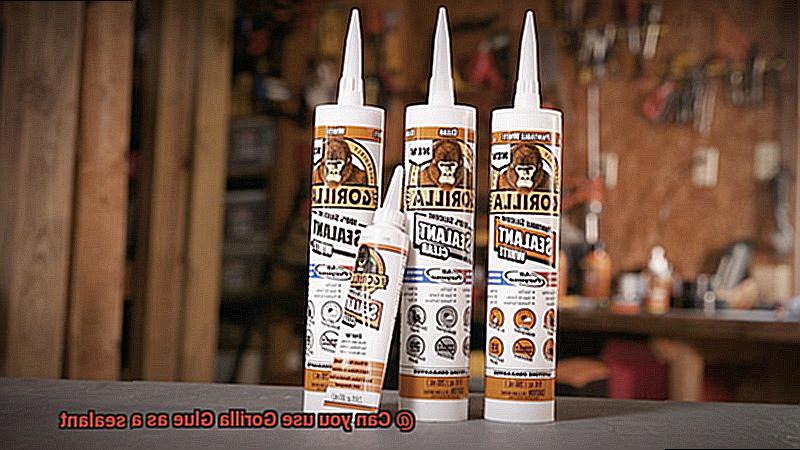
Choosing the right sealant saves time and money in the long run. Using the correct sealant avoids having to redo the project due to leaks or other damages caused by using the wrong one. Additionally, using a high-quality sealant means that you won’t have to replace it as frequently, reducing maintenance and repair costs.
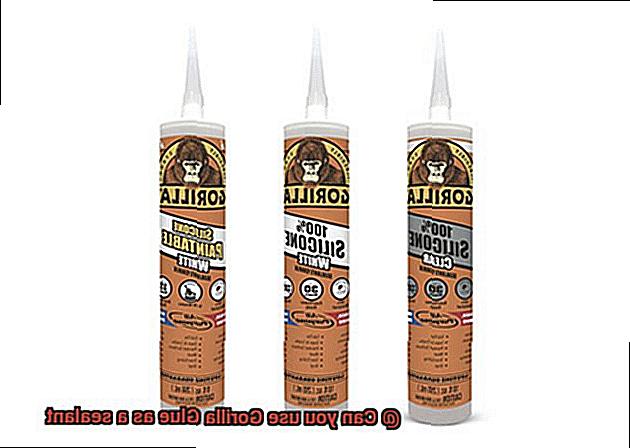
Different Types of Sealants Available
Choosing the Right Sealant for Your DIY Project
Sealants are a handy tool for any DIY enthusiast, but with so many options available, it can be challenging to know which one to choose. Each type of sealant has its unique properties and applications, making it essential to select the right one for your project. In this article, we will explore the different types of sealants available in the market and their properties.
Silicone Sealants:
Silicone sealants are a popular choice for sealing windows, doors, and other exterior areas. They provide excellent resistance to water and weathering and are highly flexible, making them ideal for areas that experience movement or vibration. Additionally, they have good adhesion properties and can be used on various surfaces like glass, metal, and plastic.
Polyurethane Sealants:
Polyurethane sealants provide superior durability and offer excellent resistance to chemicals, abrasion, and weathering. They are commonly used for sealing concrete and other porous surfaces. They also have good resistance to UV rays, making them suitable for outdoor use. Polyurethane sealants are preferred when a strong, long-lasting bond is required.
Acrylic Sealants:
Acrylic sealants are water-based and easy to apply. They dry quickly and can be painted over once they have cured. They provide good adhesion to a wide range of surfaces and are often used for sealing gaps around windows and doors. Acrylic sealants have limited flexibility compared to silicone or polyurethane sealants, but they are ideal for indoor projects where flexibility is not a concern.
Butyl Sealants:
Butyl sealants are synthetic rubber-based sealants that offer excellent adhesion to most surfaces. They can be used for sealing roofs, windows, and doors. They also have good resistance to UV rays and weathering. Butyl sealants are preferred when a permanent bond is required as they do not harden or dry out over time.
Epoxy Sealants:
Epoxy sealants are two-part systems that require mixing before application. They provide superior adhesion and are commonly used for sealing cracks in concrete or metal surfaces. Epoxy sealants offer excellent resistance to chemicals, moisture, and temperature changes, making them ideal for industrial applications.
Tips for Choosing the Right Sealant
Choosing the right sealant can make or break your project. To ensure that you select the perfect sealant for your project, consider these key factors.
Material
The type of material you are working with is a critical factor to consider when choosing a sealant. Different materials may require different types of sealants to ensure an adequate bond and protection. For instance, if you are sealing metal, you may need a sealant specifically formulated for metal surfaces.
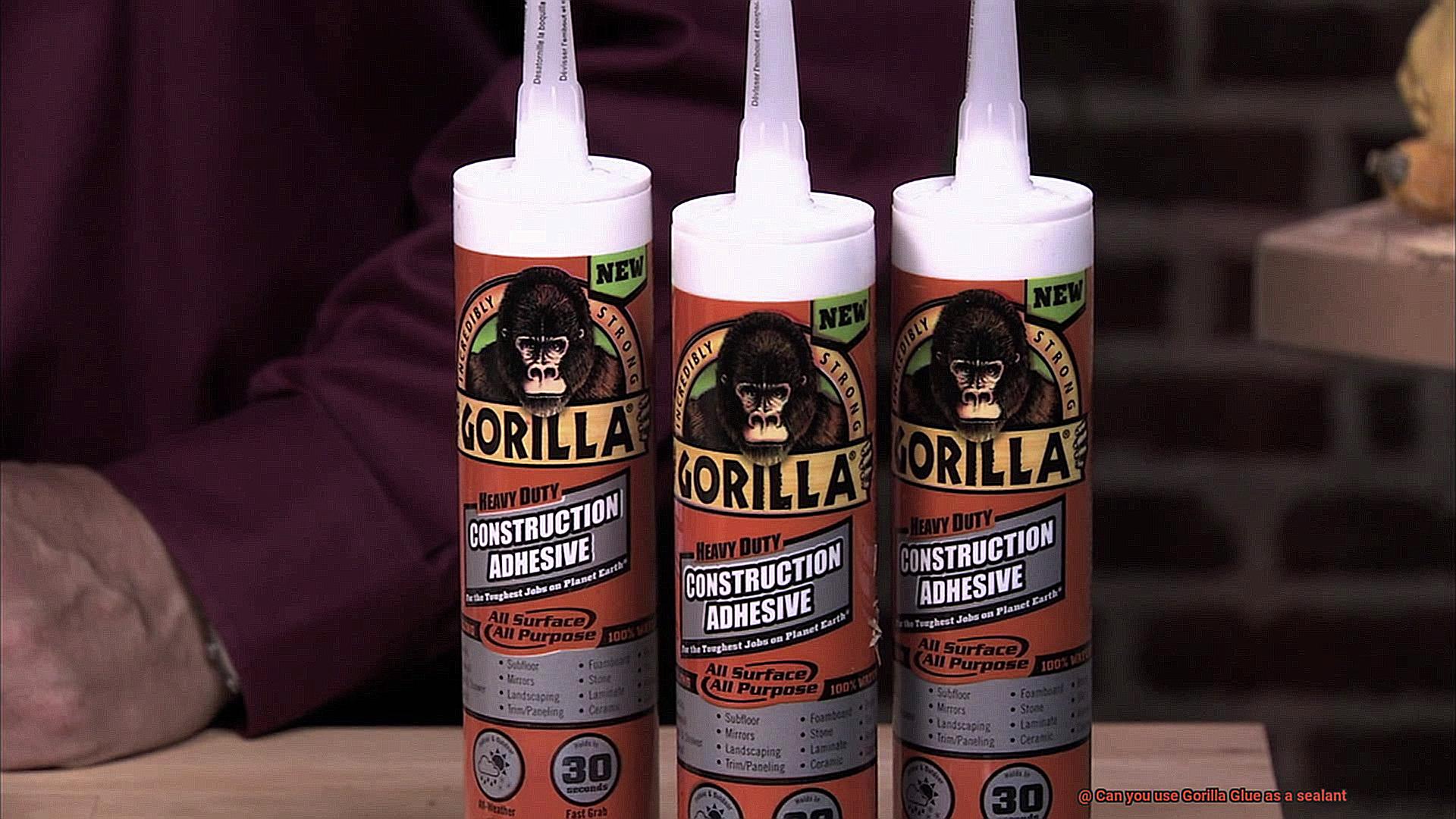
Environment
The environment in which the sealant will be used is also important. If the sealant will be exposed to harsh weather conditions or high levels of moisture, it’s crucial to choose a sealant that can withstand these conditions. Ensure that the sealant you select is weather-resistant and waterproof.
Application
The application process and drying time are also factors to consider. Some sealants may require specialized tools or techniques for application, while others may have a longer drying time that could affect the overall project timeline. Consider the application method and drying time before selecting a sealant.
Strength
Different sealants have varying levels of strength. Some may be suitable for light-duty applications, while others may be designed for heavy-duty use. Evaluate the level of strength required for your project before selecting a sealant.
Compatibility
It’s essential to choose a sealant that is compatible with any other materials or products that will be used in conjunction with it. For example, if you plan on painting over the sealed surface, make sure the sealant is compatible with paint.
How to Properly Apply a Sealant
Properly applying a sealant is crucial for ensuring the success of any DIY project or repair. Whether you’re sealing a leak in your roof or cracks in your bathroom tiles, it’s essential to follow the right steps to ensure a long-lasting and effective seal. Here are five key sub-sections to keep in mind.
Prepare the Surface
Before you start applying the sealant, you need to ensure that the surface is clean and dry. This is vital for ensuring that the sealant adheres properly and creates a strong bond. You can use a cleaning solution or simply wipe down the area with a damp cloth to get rid of any dirt or debris.
Choose the Right Sealant
With so many types of sealants available, it’s imperative to choose the appropriate one for your specific project. For example, if you need a waterproof sealant for your bathroom or kitchen, you may want to opt for a silicone-based product instead of Gorilla Glue. It’s essential to consider the type of surface you’re sealing and any environmental factors that may affect the sealant’s performance.
Apply the Sealant Evenly
When applying the sealant, make sure to cover the entire surface in a thin and even layer. An applicator tool or brush can be used to spread it evenly while avoiding leaving any gaps or air pockets. This will ensure that the sealant forms a tight and secure bond.
Allow Sufficient Drying Time
The drying time for different types of sealants can vary significantly. It’s essential to read the manufacturer’s instructions carefully and allow enough time for it to dry completely before using or exposing it to moisture. Rushing this step can lead to cracks and peeling over time.
Store Your Sealant Correctly
Finally, storing your sealant correctly is essential for ensuring its longevity and effectiveness. Keep it in a cool, dry place, and make sure to tightly seal the container when not in use. This will prevent the sealant from drying out and becoming less effective.
Common Mistakes When Applying a Sealant
Sealing a surface may appear to be a simple task, but it requires meticulous attention to detail for a successful outcome. Applying a sealant incorrectly can cause significant problems such as water damage, air leaks, and even mold growth. To avoid these issues, it’s essential to recognize the common mistakes people make when applying a sealant.
The most frequent mistake is not properly preparing the surface before applying the sealant. This is a crucial step that requires cleaning the surface thoroughly and ensuring it’s entirely dry before applying the sealant. Neglecting this step can hinder adhesion due to dirt, dust, debris, or moisture present on the surface.
Another common mistake is using either too much or too little sealant. Inappropriate amounts can result in an overflow that creates an unsightly mess or an incomplete seal that won’t offer adequate protection. It’s imperative to read the manufacturer’s instructions carefully and apply the recommended amount of sealant.
Inaccurate application techniques can also lead to failed seals. Uneven application can cause gaps and inconsistencies. Therefore, it’s crucial to apply the sealant evenly with complete coverage of the intended area. Further, not allowing sufficient drying time can cause significant issues. It’s important to follow the manufacturer’s recommended drying time before exposing the sealed area to any stress or movement.
To guarantee a successful and long-lasting seal, attention to detail and careful preparation are essential. Therefore, understanding these common mistakes and taking steps to avoid them is vital. Here are some tips to help you avoid making similar mistakes:
- Clean the surface thoroughly before applying the sealant.
- Ensure that the surface is entirely dry before applying the sealant.
- Apply the recommended amount of sealant according to the manufacturer’s instructions.
- Apply the sealant evenly with complete coverage of the intended area.
- Allow sufficient drying time before exposing the sealed area to any stress or movement.
Also Read: Can you use Elmer’s glue as a sealant?
Conclusion
To sum up, while Gorilla Glue is primarily designed as an adhesive, it can also function as a sealant in specific circumstances. Its waterproof and weather-resistant properties make it perfect for outdoor applications like sealing leaks in pipes, gutters, and roofs. However, to achieve maximum adhesion and avoid excess foam buildup, it’s crucial to follow the manufacturer’s instructions carefully when using Gorilla Glue as a sealant.
There are both advantages and disadvantages to using Gorilla Glue as a sealant. On the plus side, its ability to resist water and create a robust bond between materials makes it an excellent choice for sealing items that will be exposed to moisture or stress. However, its expanding nature can make it difficult to control the amount used, resulting in an uneven or messy finish.
If Gorilla Glue doesn’t meet your project’s needs, there are alternative sealants available such as silicone sealant, epoxy, polyurethane sealant, butyl tape, and duct tape. Choosing the right sealant for your project is crucial based on factors like material type, environmental conditions, application method, strength requirements, and compatibility with other materials.
Properly applying a sealant requires attention to detail and careful preparation. Common mistakes like not properly preparing the surface before applying the sealant or using too much or too little can lead to failed seals.


